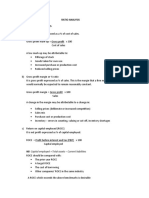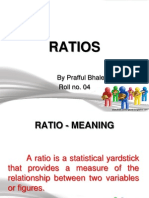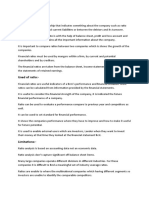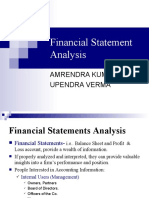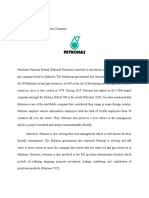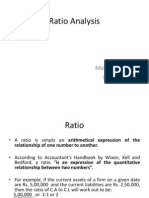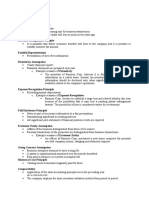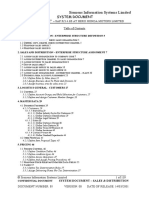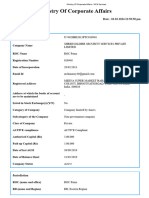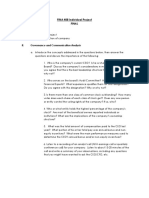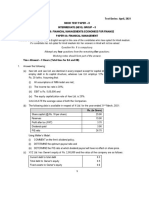0% found this document useful (0 votes)
4 views24 pagesch3 Part 2
Chapter Three discusses financial ratios analysis and financial planning, categorizing ratios into liquidity, activity, debt/leverage, profitability, and market ratios. It provides detailed calculations and interpretations of various ratios, including debt ratios, equity multipliers, profitability margins, and market ratios such as price/earnings and price/book value ratios, comparing the financial performance of a company between 2019 and 2020. The analysis indicates trends in leverage, profitability, and market valuation, highlighting areas of improvement and risk.
Uploaded by
fmhmmh25277702Copyright
© © All Rights Reserved
We take content rights seriously. If you suspect this is your content, claim it here.
Available Formats
Download as PDF, TXT or read online on Scribd
0% found this document useful (0 votes)
4 views24 pagesch3 Part 2
Chapter Three discusses financial ratios analysis and financial planning, categorizing ratios into liquidity, activity, debt/leverage, profitability, and market ratios. It provides detailed calculations and interpretations of various ratios, including debt ratios, equity multipliers, profitability margins, and market ratios such as price/earnings and price/book value ratios, comparing the financial performance of a company between 2019 and 2020. The analysis indicates trends in leverage, profitability, and market valuation, highlighting areas of improvement and risk.
Uploaded by
fmhmmh25277702Copyright
© © All Rights Reserved
We take content rights seriously. If you suspect this is your content, claim it here.
Available Formats
Download as PDF, TXT or read online on Scribd
/ 24


